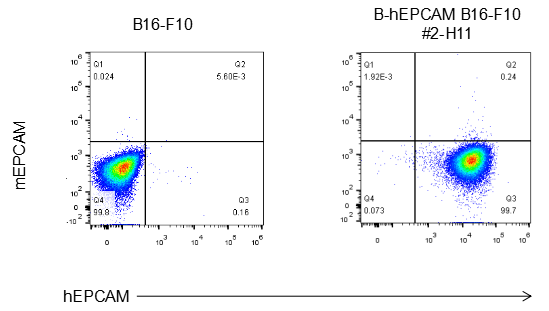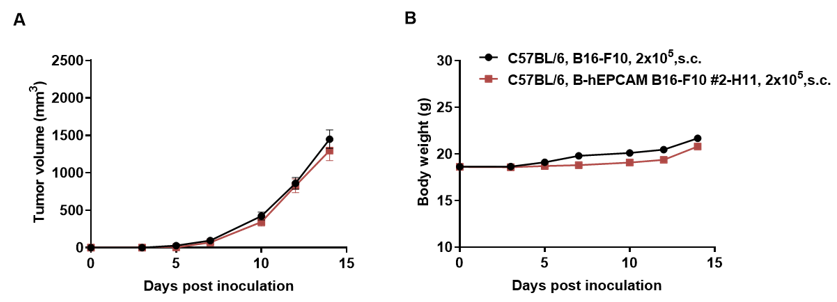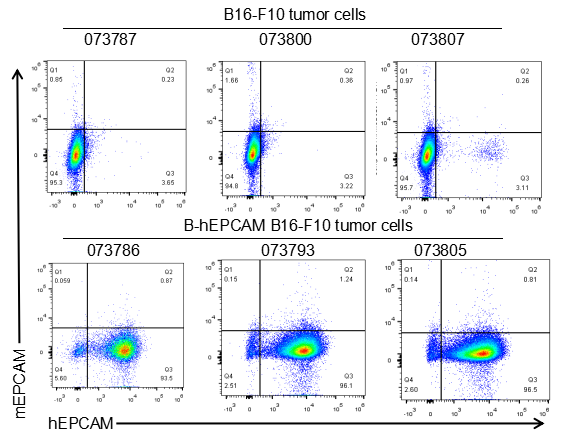B-hEPCAM B16-F10
|
Common name |
B-hEPCAM B16-F10 | Catalog number | 322010 |
| Aliases | DIAR5, EGP-2, EGP40, ESA, HNPCC8, TROP1 | Disease | Melanoma |
|
Organism |
Mouse |
Strain | C57BL/6 |
| Tissue types | Skin | Tissue | Skin |
Gene targeting strategy for B-hEPCAM B16-F10 cells. The exogenous promoter and human EPCAM coding sequence was inserted to replace part of murine exon 4 and all of exons 5~7. The insertion disrupts the endogenous murine Epcam gene, resulting in a non-functional transcript.

EPCAM expression analysis in B-hEPCAM B16-F10 cells by flow cytometry. Single cell suspensions from wild-type B16-F10 and B-hEPCAM B16-F10 cultures were stained with species-specific anti-EPCAM antibody. Human EPCAM was detected on the surface of B-hEPCAM B16-F10 cells but not wild-type B16-F10 cells. The 2-H11 clone of B-hEPCAM B16-F10 cells was used for in vivo experiments.

Subcutaneous homograft tumor growth of B-hEPCAM B16-F10 cells. B-hEPCAM B16-F10 cells (2x105) and wild-type B16-F10 cells (2x105) were subcutaneously implanted into C57BL/6 mice (female, 9-week-old, n=8). Tumor volume and body weight were measured thrice a week. (A) Average tumor volume ± SEM. (B) Body weight (Mean± SEM). Volume was expressed in mm3 using the formula: V=0.5 X long diameter X short diameter2. As shown in panel A, B-hEPCAM B16-F10 cells were able to establish tumors in vivo and can be used for efficacy studies.
Animals with tumor volume over 3000mm3 in the control group were euthanized.

B-hEPCAM B16-F10 cells were subcutaneously transplanted into C57BL/6 mice (n=8), and post inoculation, tumor cells were harvested and assessed for human EPCAM expression by flow cytometry. As shown, human EPCAM was highly expressed on the surface of tumor cells. Therefore, B-hEPCAM B16-F10 cells can be used for in vivo efficacy studies of novel EPCAM therapeutics.








